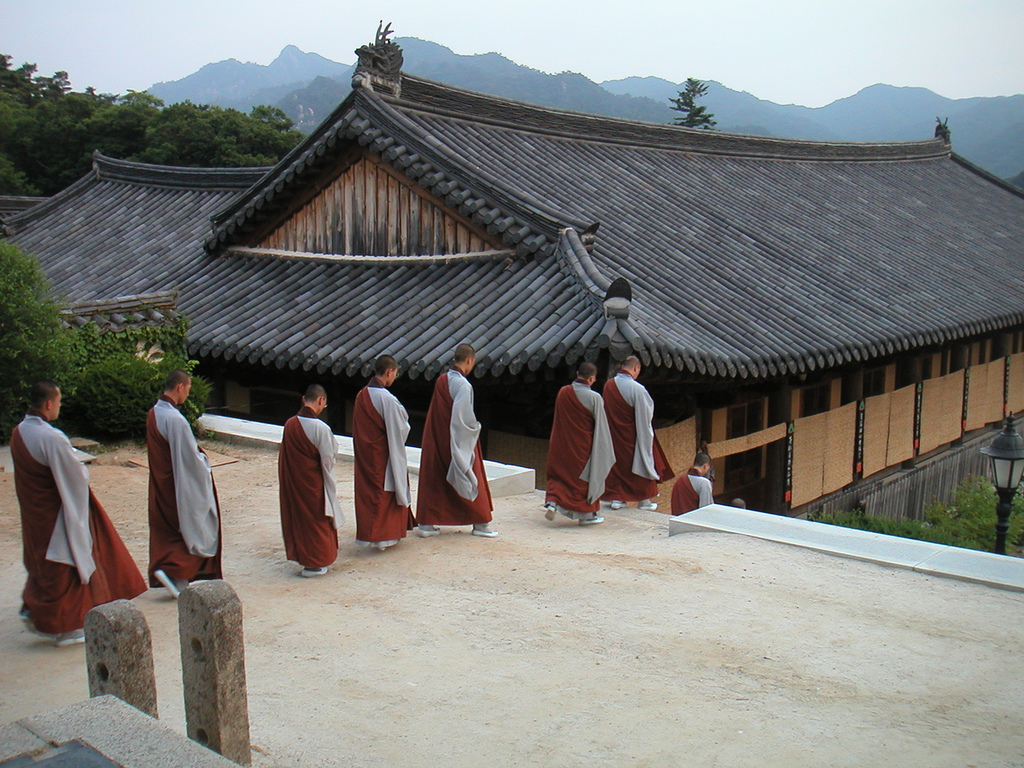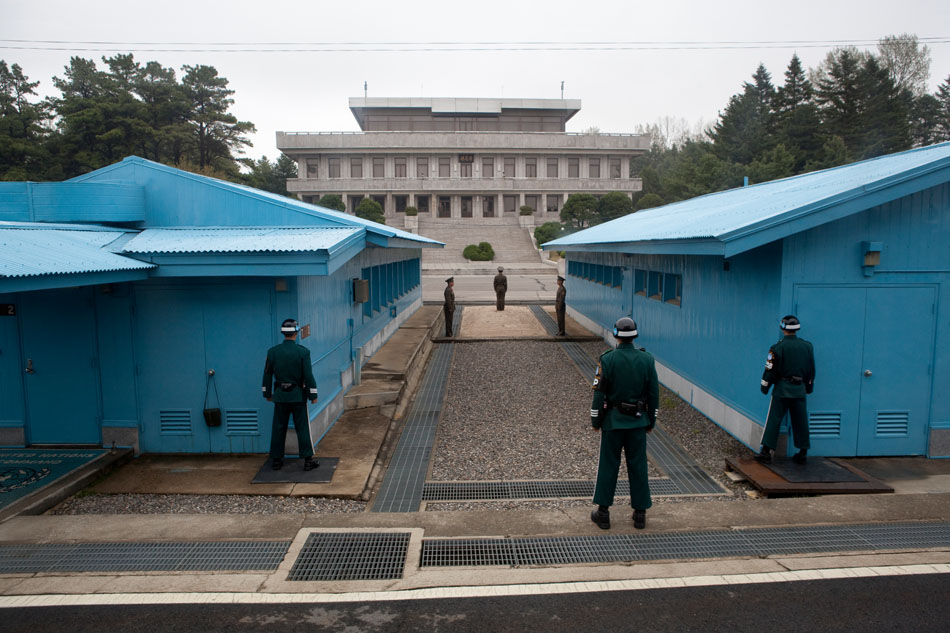The Learning
This morning our group headed off to
Korea University for the first three sessions of our lecture series while here in Seoul. Various professors from both KU as well as other colleges/universities in Korea and the U.S. are sharing their expertise on a variety of Korean social, political, and economic issues. Today our lectures where over "Language", "Economy", and "Education" in Korea.
Language: The Korean alphabet, better known as Hangeul, was created in the mid-1400s under the leadership of King Sejung. The Korean people had been heavily influenced by the Chinese for centuries, and while they spoke a distinct language the Chinese alphabet had been used for the written version of Korean. Sejung felt that the Chinese characters were too complicated for the common people and wanted something more simple in hopes that they could learn to read. It is estimated that today there are 79 million speakers of Korean world-wide: 60% in South Korea, 31% in North Korea, and 9% elsewhere (China, Russia, USA, etc.).
David = 데이비드 (pronounced: deibideu)
Oklahoma = 오클라호마 (pronounced: okeullahoma
 |
| Professor Mikyung Chang |
Economy: A very intriguing discussion regarding South Korea's economic development growth. In the aftermath of the Korean War South Korea was the poorest country in Southeast Asia (even below North Korea). Due to multiple five-year plans and lots of regulations from a strong "dictatorial" government the economy rapidly developed. As of 2012, South Korea joined an economic group which their media calls the "20-50 Club", those countries who have an annual per capita income of $20,000 or more AND a population of at least 50 million people. There are currently only seven total countries that meet both qualifications: Japan (joined in 1987), USA (1988), France (1990), Italy (1990), Germany (1991), UK (1996), and South Korea (2012). One interesting point raised was that the government understood that the fertility rate (average number of children born per woman) is linked to economic development and thus a policy was enacted to discourage couples from having more than two children each: any government based economic incentives, like health insurance, was denied to the 3rd or subsequent child. However, significant concerns developed in the 1990s with the economic advancement combined with declining population growth that there would eventually not be enough workers paying taxes so as to help finance government-based elder care programs (like our Social Security) so now there are cash bonus plus the other benefits if couple will have more than two children--it is too early to tell how much long-term success will come from these programs.
 |
| Professor Innwon Park |
Education: Following a brief video created by the Korean
Ministry of Education, the discussion noted that Korean education was much of the driving force behind the economic growth. The government wanted to profit from its human capital so it tried to provide the best quality education possible. So much in Korean society has been linked with the "best" education that many parents place a large amount of pressure on their students to earn the highest possible grades and national standardized test scores. So important is this quest for high grades, many families hire tutors for their children's after school hours. It was "claimed" that the most influential indicator of a couple's marital happiness is(are) the score(s) of their child(ren) on standardized tests. With her blessing, the discussion ventured away from the presenters pre-planned PowerPoint presentation to a discussion on the importance of educational systems which place so much emphasis on standardized test scores, an issue of concern to many educators and parents within the United States.
 |
| Professor Mimi Bong |
The Teaching
Following the morning of being "students" and our special lunch meeting at Korea University, we traveled across Seoul to Goyang Foreign Language High School. As we entered the meeting hall we were welcomed by thunderous applause from the pre-selected student guides for the afternoon. Word of greeting were given by the school's principal and two student leaders. GFLHS is a private Christian school in which most of the students live on campus due to the distance from their families' homes. The nearly 1400 students are involved in school-related studies (classes and co-curricular activities) from 7:00 AM to 11:00 PM Monday through Friday and until 1:00 PM on Saturdays (yes, that's 18 hours of school per day!!!).
 |
| washing up after PE class |
The students then broke up into small groups to accompany pairs of teachers from our team on a campus tour which would concluded at their home room class. Once at the classrooms we were able to spend about 15 minutes on a lesson we had previously prepared (originally we were told 25 minute lessons...but hey, things change, right?). I quickly passed out some bookmarks of Sequoya and Clara Luper I had taken as gifts and briefly explained each person's significance in Oklahoma's history. It was cool to be able to connect Sequoya's Cherokee story with that of King Sejung and the Korean alphabet.
 |
| lesson handouts and Sequoya bookmark |
I then passed out the handouts I had made for my lesson/discussion on "Natural Disasters and Community Response". Due to the time changes, I wasn't able to provide the time for individual writing and small group discussions for which I had planned. I was able to, however, briefly discuss the recent May 20 tornado in Moore and SW Oklahoma City and show them pictures of the tornado with Southmoore in the foreground as well as before/after pictures of the overall tornado path and Plaza Towers Elementary School. Students enjoyed the fact that my handouts included pictures of the front pages of two Korean newspapers with headlines/pictures of the tornado event. I then drew their attention to recent natural disasters in Korea and we briefly discussed how a community might react in the aftermath...one young lady had a great word for it: "help!".
 |
| my student guides for the afternoon |
We then headed back to the hotel to be dropped off for dinner and running around on our own. It was great to do some remote road roaming today in the forums of each a student and a teacher.

 Tonight, I had the opportunity attend a reception held at Express Ranch (home of Bob Funk) and sponsored by Water4 in honor of this Kenyan delegation. It was an honor to meet:
Tonight, I had the opportunity attend a reception held at Express Ranch (home of Bob Funk) and sponsored by Water4 in honor of this Kenyan delegation. It was an honor to meet:






















































